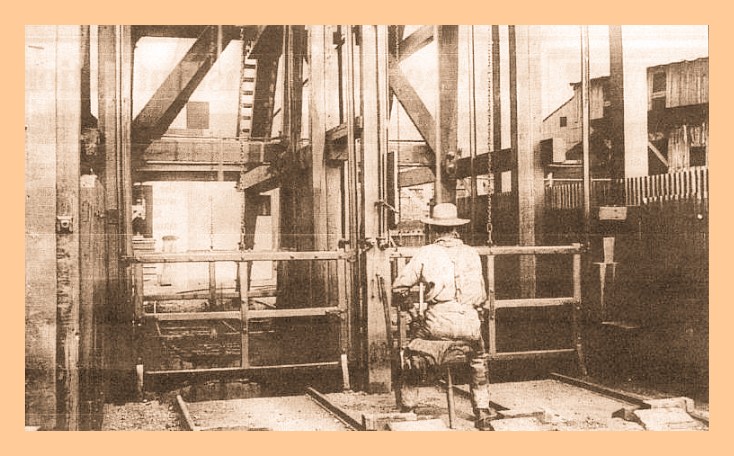A mine shaft worker is pictured a work at the Thomaston Colliery about 1900.
From a series of articles that appeared in the Pottsville Republican and Herald in 1997:
The Thomaston Colliery was located in the Heckscherville Valley at the Thomaston Railroad Station.
The colliery was opened by a water-level tunnel driven 380 feet south in the Mine Hill Mountain to the bottom split of the Mammoth Vein by Richard Heckscher & Company in 1850. in 1855, miners sank the shaft 250 feet deep to the top split of the Mammoth Vein.
Hecksher & Company operated the colliery, mining the water-level tunnel and shaft workings to 1864 on the lands of the Forest improvement Company. The charter of the Forest improvement Company, granted in 1839, prohibited the company from entering the business of mining and operating collieries. But in 1844, the original charter was repealed by an act of assembly.
On April 29, 1864, another supplement approved changing the name of the Forest Improvement Company to the Union Improvement Company and permitted it to mine coal on its lands.
After the name had been changed to the Union Improvement Company, it was discovered that another coal company with precisely the same name and offices in Philadelphia had been incorporated under the laws of Pennsylvania.
The court petitioned the Union Improvement Company to change its name to the New York and Schuylkill Coal Company; Charles Heckscher, president, on August 5, 1864.
The company mined the colliery until 1867, when its mines were sold by the sheriff.
In 1867, the colliery was leased to Thomas Schollenberger, who operated it by mining the water-level tunnel and the shaft workings. The tunnel gangway had been driven more than three miles and the shaft workings completed. They were both abandoned in 1871.
In 1870, Schollenberger sank a double-track hoisting slope 840 feet to the Top Split Vein 2,400 feet west of the pump slope and connected to the two slopes in the “Lelar” (Middle Split) Vein for draining the future workings to the pump slope.
In 1872, the colliery was purchased by the Philadelphia & Reading Coal & Iron Company, which made many improvements, including extending tunnels to other veins and developing the colliery for large production.
In 1890, the Philadelphia & Reading Coal & Iron Company sunk the Mine Hill Slope 300 feet to the basin on the Top Split Mammoth Vein, which was located in the Roghersville Basin 4,000 feet west of the colliery.
In 1893, miners sank the “Lelar” Pump Slope to 700 feet.
The colliery continued to mine until 1898, when it was abandoned and allowed to fill with water. As the water rose it was discovered that it was seeping through the barrier pillar separating the Thomaston and Richardson Collieries. Because there was a danger of flooding the active Richardson workings, the water was removed from the entire workings.
The colliery reopened in 1899 and mining resumed in 1905 by extending the slope on the Middle Split Vein 921 feet from the surface. In 1913, the company started to remove the water in the old abandoned South Dip Anchor Colliery, which was connected in the North Dip Lelar (Middle Split) Vein by a tunnel driven across the basin about 1868.
After removing the water, the Thomaston Workings were extended on the North Dip Vein. The colliery was finally abandoned March 3, 1933, and allowed to fill with water.
The total shipments of coal from Thomaston Colliery as of 1899 when suspended was 3,317,950 tons. The capital invested in the colliery in 1852 was $40,000.

_______________________________________________
Article by Frank Blase, Historian, Reading Anthracite Company Historical Library, Pottsville Republican & Herald, May 10, 1997. Obtained from Newspapers.com.
Corrections and additional information should be added as comments to this post.
